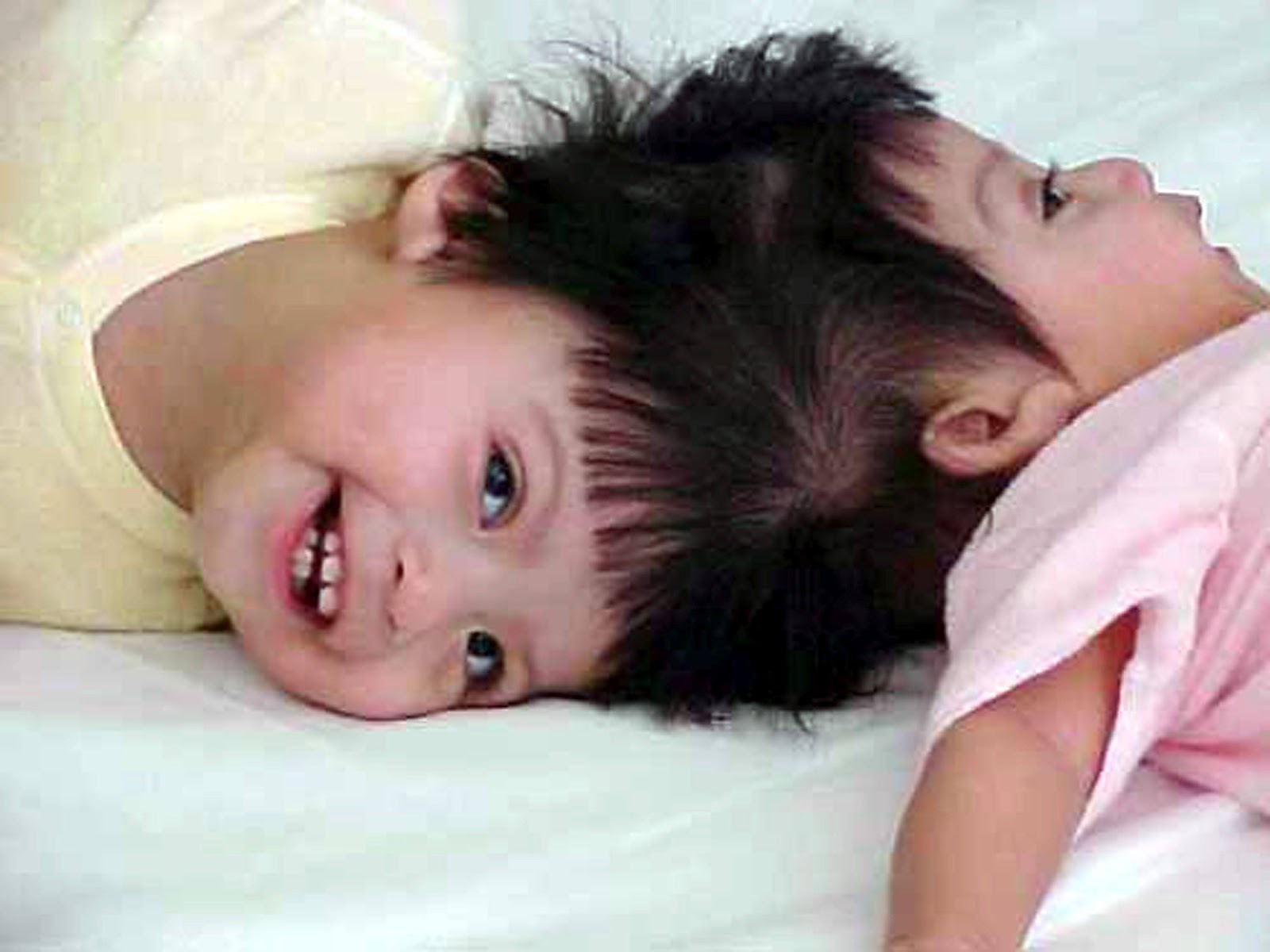Conjoined Siamese Twins: A Fascinating Journey Through Medical Wonders And Human Resilience
Picture this: two lives intertwined, sharing not just a bond but also physical existence. Conjoined siamese twins have long fascinated the world, sparking both awe and curiosity. From ancient myths to modern medical marvels, their stories are a testament to human resilience and scientific advancement. So, buckle up as we dive into the incredible world of conjoined twins, exploring everything from their origins to the challenges they face and the incredible lives they lead.
Now, before you think this is just another medical article, let me assure you, it's more than that. It's about understanding these extraordinary individuals, their unique situations, and the incredible strength they display every single day. Whether it’s about their medical journey or their personal lives, this article is here to shed light on their world in a way that’s relatable and inspiring.
We’re talking about conjoined siamese twins, a phenomenon that continues to captivate the hearts and minds of people across the globe. But what exactly makes them so special? Let’s find out as we explore the science, the stories, and the soul behind these incredible individuals.
- Ryan Gosling And Eva Mendes A Hollywood Love Story That Stole Our Hearts
- Meet The Incredible Actors In Wonder Woman Movie Who Brought The Story To Life
What Are Conjoined Siamese Twins?
Let’s kick things off with the basics. Conjoined siamese twins are identical twins who are physically connected at birth. This happens when a single fertilized egg doesn’t completely separate during the early stages of development. Instead of forming two distinct embryos, the egg partially splits, resulting in twins who share parts of their bodies. It’s a rare occurrence, happening in about 1 in 200,000 live births, according to the University of Maryland Medical Center.
These twins can be connected in various ways, and the extent of their connection determines the complexity of their medical journey. Some may share organs, while others might only share skin or bones. The term "Siamese twins" originated from Chang and Eng Bunker, two conjoined brothers born in Siam (now Thailand) in 1811, who gained worldwide fame.
Types of Conjoined Twins
Not all conjoined twins are the same. Here’s a quick rundown of the different types:
- Cassandra Naud Unveiling The Life And Achievements Of A Rising Star
- Monica Bellucci The Iconic Beauty Who Stole Hearts Worldwide
- Thoraco-omphalopagus: Connected at the chest and abdomen, often sharing a heart or liver.
- Craniopagus: Joined at the head, which is one of the most complex types due to shared brain tissue.
- Pygopagus: Connected back-to-back at the pelvis, usually sharing the spinal cord.
- Ischiopagus: Joined at the pelvis, often with shared legs or reproductive organs.
- Omphalopagus: Connected at the abdomen, sometimes sharing intestines or other organs.
Each type presents its own set of challenges, both medically and personally. But one thing’s for sure—every conjoined twin is unique, with their own story to tell.
Biography of Famous Conjoined Twins
Throughout history, several conjoined twins have captured the world’s attention, not just for their condition but for their incredible achievements and resilience. Let’s take a closer look at some of these remarkable individuals.
Chang and Eng Bunker: The Original Siamese Twins
Chang and Eng Bunker, born in 1811 in Siam (now Thailand), were the first conjoined twins to gain global fame. They were joined at the chest and traveled the world as part of a circus act before settling in North Carolina. Despite their condition, they lived long, fulfilling lives, marrying sisters and having a combined total of 21 children.
| Name | Birth Year | Connection Type | Occupation |
|---|---|---|---|
| Chang Bunker | 1811 | Thoraco-omphalopagus | Circus Performer |
| Eng Bunker | 1811 | Thoraco-omphalopagus | Circus Performer |
Medical Advances and Separation Surgeries
Medical science has come a long way in understanding and treating conjoined twins. Separation surgeries are among the most complex procedures in medicine, requiring a team of specialists and months, sometimes years, of planning.
Factors like the type of connection, shared organs, and overall health of the twins play a crucial role in determining the success of these surgeries. While some surgeries have been successful, others have faced challenges, emphasizing the need for careful consideration and planning.
Success Stories
One of the most notable success stories is that of Jadon and Anias McDonald, conjoined twins who were successfully separated in 2016 after a grueling 11-hour surgery. The procedure was led by Dr. James Goodrich, a renowned pediatric neurosurgeon, and involved a team of over 30 medical professionals.
The Emotional and Psychological Journey
Beyond the medical aspects, conjoined twins also face emotional and psychological challenges. Growing up with a condition that sets them apart from others can be tough, but many have found strength in their uniqueness.
Support from family, friends, and communities plays a vital role in helping them navigate these challenges. Counseling and therapy can also be beneficial in addressing any emotional or psychological issues that may arise.
Building Resilience
Resilience is a key trait in the lives of conjoined twins. They learn to adapt to their circumstances, often finding creative ways to overcome obstacles. This resilience not only helps them in their personal lives but also inspires those around them.
Living with Conjoined Siamese Twins
Life as a conjoined twin is not without its challenges, but it’s also filled with moments of joy and triumph. Many conjoined twins lead fulfilling lives, pursuing their passions and achieving their dreams.
From education to careers, the possibilities are endless. With the right support and resources, conjoined twins can thrive in various fields, proving that their condition doesn’t define their potential.
Breaking Stereotypes
One of the biggest challenges faced by conjoined twins is breaking stereotypes and misconceptions about their condition. Education and awareness play a crucial role in changing perceptions and promoting acceptance.
The Role of Technology and Innovation
Technology has played a significant role in advancing the understanding and treatment of conjoined siamese twins. From 3D printing for surgical planning to advanced imaging techniques, these innovations have made a huge difference in the field.
Virtual reality and simulation tools are also being used to train medical professionals, ensuring they are well-prepared for the complexities of separation surgeries.
Future Prospects
Looking ahead, the future seems promising for conjoined twins. Continued research and development in medical science offer hope for even more successful outcomes. The focus remains on improving the quality of life for these incredible individuals.
Community and Support Networks
Having a strong support network is essential for conjoined twins and their families. Organizations and communities dedicated to supporting individuals with rare conditions provide valuable resources and a sense of belonging.
These networks offer opportunities for connection, education, and advocacy, ensuring that conjoined twins and their families are never alone in their journey.
Advocacy and Awareness
Raising awareness about conjoined siamese twins is crucial in promoting understanding and acceptance. Advocacy efforts can lead to better policies, increased funding for research, and improved access to resources.
Conclusion: Celebrating the Human Spirit
In conclusion, conjoined siamese twins are a testament to the incredible resilience and strength of the human spirit. Their stories remind us that despite challenges, there’s always room for hope, growth, and triumph.
So, the next time you hear about conjoined twins, remember that they’re not just medical cases—they’re individuals with dreams, passions, and stories worth sharing. Take a moment to appreciate their journey and the incredible advances that have made it possible for them to lead fulfilling lives.
And hey, don’t forget to share this article with your friends and family. The more we talk about these amazing individuals, the more we can break down barriers and promote understanding. Together, we can make a difference!
Table of Contents
- What Are Conjoined Siamese Twins?
- Types of Conjoined Twins
- Biography of Famous Conjoined Twins
- Medical Advances and Separation Surgeries
- Success Stories
- The Emotional and Psychological Journey
- Building Resilience
- Living with Conjoined Siamese Twins
- Breaking Stereotypes
- The Role of Technology and Innovation
- Future Prospects
- Community and Support Networks
- Advocacy and Awareness
- Conclusion: Celebrating the Human Spirit


Detail Author:
- Name : Louie Rice
- Username : arussel
- Email : shaun60@hotmail.com
- Birthdate : 1971-07-25
- Address : 93379 Amparo Freeway Suite 564 Wymanside, MA 49346-0234
- Phone : (804) 527-3872
- Company : Smitham Inc
- Job : Personal Trainer
- Bio : Minima neque repudiandae accusantium aperiam numquam quia. Dicta sunt tempore provident reiciendis ut est ab. Dolorem sit doloribus harum dolorum.
Socials
linkedin:
- url : https://linkedin.com/in/cielo1325
- username : cielo1325
- bio : Nostrum excepturi corrupti tempore.
- followers : 4842
- following : 2533
instagram:
- url : https://instagram.com/cielomccullough
- username : cielomccullough
- bio : In sit molestiae molestiae quis. Et natus cupiditate sit et commodi. Nobis et quo omnis non.
- followers : 5975
- following : 86
tiktok:
- url : https://tiktok.com/@cielo.mccullough
- username : cielo.mccullough
- bio : Consequatur quaerat repellat officiis molestiae. Magnam harum aut non.
- followers : 1748
- following : 961
twitter:
- url : https://twitter.com/cmccullough
- username : cmccullough
- bio : Beatae mollitia est rerum consequatur libero maxime. Dolore eum in exercitationem maiores necessitatibus libero. Unde enim deleniti quia rerum mollitia.
- followers : 4765
- following : 1497
facebook:
- url : https://facebook.com/cielo5528
- username : cielo5528
- bio : Dolorem quia ut in et et ut et commodi.
- followers : 955
- following : 1989